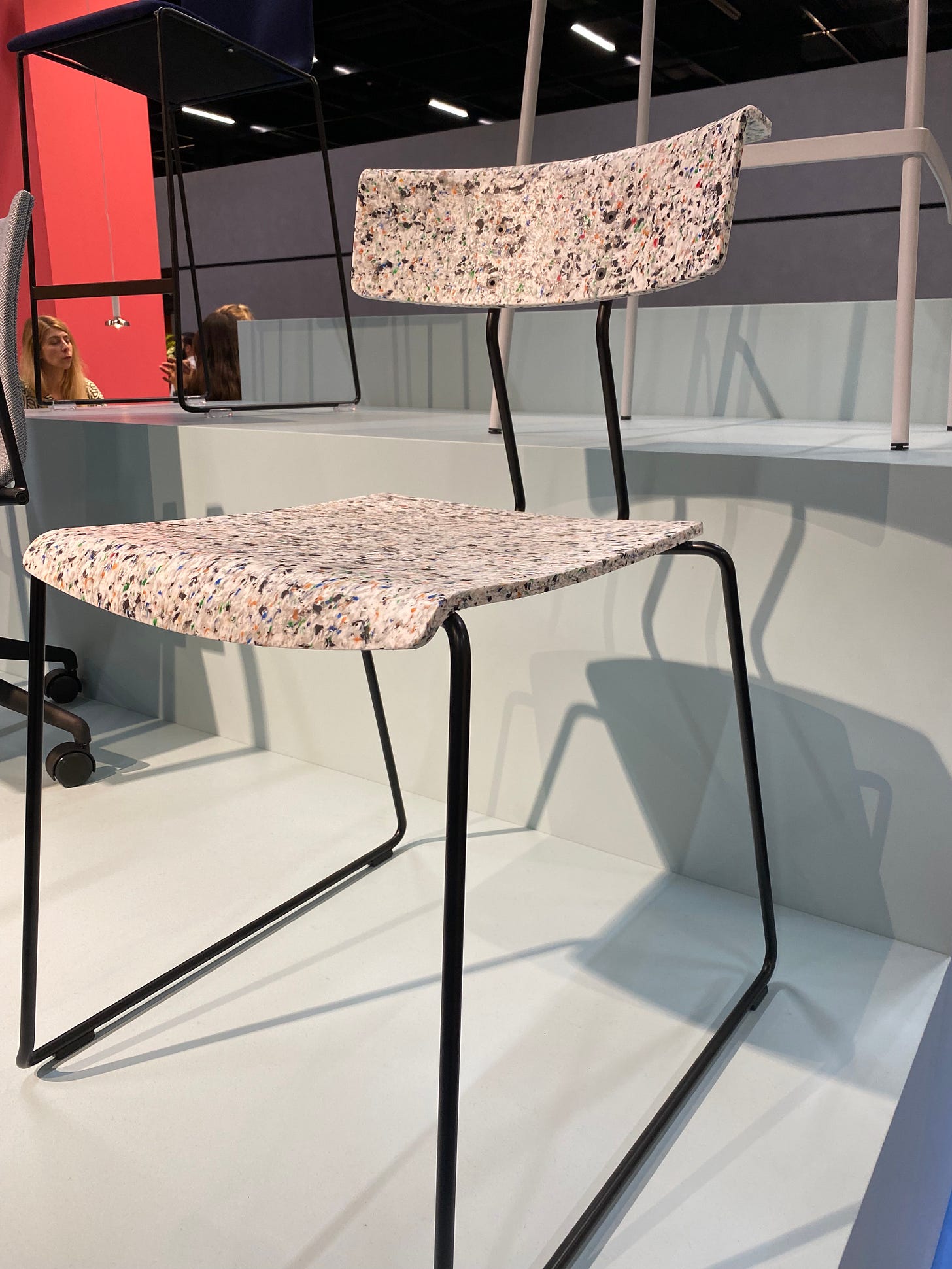The Big Problem With Recycled Materials in Furniture Design
The quest for sustainable furniture design has led to a surge in innovative, recycled materials. But do these materials translate into truly desirable pieces that are genuinely sustainable?
From chairs made from terrazzo style recycled plastics to tables made from used coffee granule composites, more and more manufacturers in the design field are drawing from an ever increasing roster of recycled materials.
But the question nobody seems to be asking is this: do these materials make for truly desirable products? And are they really sustainable?
The conclusions I've drawn in the following article might not be to everyone's liking. But they are honest.
Recycled materials
Let’s just clarify what I actually mean by recycled materials.
I'm not talking about the kind of leftover raw materials which some designers use to make furniture, such as Piet Hein Eek or Studio Raw material.
Nor am I talking about the post industrial waste-infused plastic composites currently employed by manufacturers such as Muuto or &Tradition to produce their mass produced chairs.
I’m talking about a new generation of experimental materials which display their recycled compositions with pride. Materials procured and recycled from ocean bound plastics, discarded textiles and other reclaimed materials such as agricultural waste and human hair.
Several manufacturers have harnessed a number of such recycled materials for their latest product lines. Montana’s Averny T chair, for example, is made from recycled household consumer plastics. Kvadrat recently partnered with Really to create table tops made from recycled t-shirts. And Mater is producing a series of coffee grind composite tables and chairs designed by Space Copenhagen.
I’m not denying that the technical feat of transforming former waste materials into usable pieces of furniture is very impressive. And although I massively applaud designers and manufacturers for pioneering the use of these sorts of materials, the undeniable question is this:
Is owning a chair made from recycled material such as ocean plastic, or a table made from down-cycled t-shirts a truly appealing prospect for the average consumer?
I’m not so sure it is.
For most consumers, recycled plastics, post-consumer waste, and just about any form of waste turned recycled material conjure up images of overflowing landfills, polluted beaches and, well, rubbish - trash, for our US friends.
These materials certainly do a good job at grabbing headlines on the news sections of online design blogs. But, as I wrote in this previous article, consumers aren’t falling in love with products just because they have eco-friendly credentials.
And that just might be the biggest achilles heel for furniture made from this kind of recycled material.
Why Materials Matter
Psychological negative connotations of waste aside, these recycled materials have another, more practical problem to address.
Unlike ‘traditional’ materials such as wood or chrome, this new wave of recycled materials have yet to prove themselves as suitable partners in crime for long lasting, aesthetically pleasing furniture.
From being too brittle, susceptible to UV discolouration or too permeable, these materials are often riddled with problems which hamper their adoption into mass production. What’s more, some recycled materials need to be bound together with fossil-based polyester and bioplastic resins, a fact which has invited critical voices of greenwashing.
Despite all of these concerns, product designers continue to place these materials at the very centrepiece of the products they are designing, often leaving practical considerations to fall by the wayside.
In doing so, the chances of these products getting thrown away and re-recycled into something else increases drastically, which in turn increases carbon footprint, adding to their fleeting nature.
So the obvious conclusion is this: surely it’s better to make something well once than to repurpose a material several times over?
Rethinking Recycling
Here’s a radical thought. Maybe these new recycled materials aren’t the right solution after all. Maybe, as Piet Hein Eek recently said in an interview with CNN, we are merely focusing “on the symptoms, and not on the solutions,” of our throwaway culture.
Maybe what we need is a fundamental mindset shift with a focus on reusing and refurbishing existing furniture, rather than creating new lines of circular furniture.
Surprisingly, there are a couple of industry giants who have already made substantial inroads into this alternative approach.
Vitra, for one, has cut right into the heart of this idea of reusing and refurbishing furniture pieces with its Circle Stores in Brussels, Amsterdam and on the Vitra Campus. With this, Vitra enables customers to purchase used, approved and reconditioned products from Vitra and Artek.
IKEA is also pioneering a service which buys back used furniture items from customers, which are then resold as part of its As-is online shop.
To what extent these circular initiatives will become more integrated into the core economic structure of Vitra and IKEA going forward is anyone's guess. After all, can we really expect these giants to allow such schemes to cannibalise their main business of producing new things?
However, both of these examples set a fantastic precedent for circularity within the furniture industry, and we really should be commending the incorporation of such second hand schemes into an industry which fundamentally survives by producing products anew.
Conclusion
This article isn't an attempt to put down the efforts of researchers and designers who are developing recycled materials and furniture.
After all, design, as a discipline of innovation, should explore the possibilities of new materials and production methods – just as Charles & Ray Eames and their peers did with their plastic and fibreglass composite experiments in the 1940s.
My worry is that these materials are not truly paving the way towards a truly sustainable future, and are merely just a distraction from the bigger changes required.
Maybe the solutions offered by Vitra and IKEA are indeed showing us a glimpse of a new mindset and approach which could help to foster genuine sustainable practices. An approach which priorities reuse over constant replacement may prove to be the best form of recycling after all.






